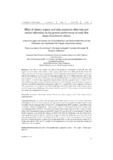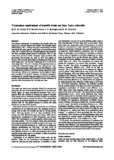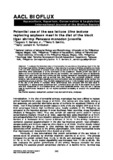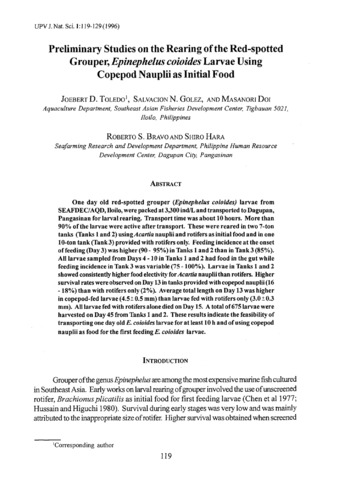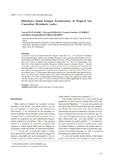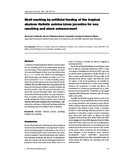Search
Now showing items 1-10 of 174
Effect of dietary organic acid salts, potassium diformate and sodium diformate on the growth performance of male Nile tilapia Oreochromis niloticus
The effect of two organic acid salts on the production performance of juvenile male Nile tilapia Oreochromis niloticus were studied in two separate experiments. In the first trial the fish (initial size: 7.84kg) were fed ...
Dietary lipid requirement of whiteleg shrimp Litopenaeus vannamei juveniles cultured in biofloc system
(Wiley, 2020-06)
An eight-week feeding trial was conducted to evaluate the contribution of biofloc on dietary lipid requirement in whiteleg shrimp Litopenaeus vannamei. Five diets with graded levels of dietary lipid (45, 60, 90, 120 and ...
Tryptophan requirement of juvenile Asian sea bass Lates calcarifer
(Blackwell Publishing, 2004)
The dietary requirement of tryptophan for juvenile Asian sea bass (Lates calcarifer Bloch) was studied. The juveniles (mean initial weight, 5.30 ± 0.06 g) were given semi-purified test diets containing fish ...
Potential use of the sea lettuce Ulva lactuca replacing soybean meal in the diet of the black tiger shrimp Penaeus monodon juvenile
(Bioflux, 2015)
To evaluate the biological value of incorporating the sea lettuce Ulva lactuca meal in the diet of the black tiger shrimp (Penaeus monodon), 3 diets were fed to groups of shrimps containing two levels (15% and 30% replacement ...
Evaluation of leguminous seed meals and leaf meals as plant protein sources in diets for juvenile Penaeus indicus
(Society of Israeli Aquaculture and Marine Biotechnology, 1998)
The potential of locally available legumes (white cowpea, Vigna unguiculata, and green mung-bean, Vigna radiata) and leaf meals (papaya, Carica papaya, and cassava, Manihut esculenta) in combination with defatted soybean ...
Preliminary studies on the rearing of the red-spotted grouper, Epinephelus coioides larvae using copepod nauplii as initial food
(University of the Philippines in the Visayas, 1996)
One day old red-spotted grouper (Epinephelus coioides) larvae from SEAFDEC, Iloilo, were packed at 3.300 ind/L and transported to Dagupan, Pangasinan for larval rearing. Transport time was about 10 hours. More than 90% of ...
Diet-tissue stable isotopic fractionation of tropical sea cucumber, Holothuria scabra
(Japan International Research Center for Agricultural Sciences (JIRCAS), 2013)
To provide a basis for a stable carbon and nitrogen isotope ratio \(\mathsf{(\delta^{13}C / \delta^{15}N)}\) analysis to determine the assimilated organic matter in sea cucumber, Holothuria scabra, diet-tissue fractionations ...
A review of reported seaweed diseases and pests in aquaculture in Asia
(Wiley, 2020-08)
Seaweeds have been used as a food for centuries in Asia and are increasingly exploited as a source for dietary supplements, animal feed, chemicals, and biofuels. In recent years, there has been an increase in the prevalence ...
Daily rates of ingestion on rotifers and Artemia nauplii by laboratory-reared grouper larvae of Epinephelus suillus
(San Carlos Publications, University of San Carlos, 1994)
The amount of rotifers and Artemia nauplii consumed daily by the grouper Epinephelus suillus larvae was determined through examination of gut contents. The larvae (2.6 mm TL) were initially fed rotifers on day 2 and newly ...
Shell marking by artificial feeding of the tropical abalone Haliotis asinina Linne juveniles for sea ranching and stock enhancement
(Blackwell Publishing, 2003)
A method of marking abalone (Haliotis asinina Linne) for sea ranching and stock enhancement purposes was developed. Three-month-old abalone juveniles (11.8-mm shell length, 0.28 g) were fed artificial diets for 1, 2, or 3 ...

